|
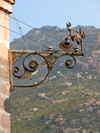 |
The Arunachaleswara
Temple
Tiruvannamalai, Tamil Nadu |
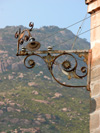 |
|
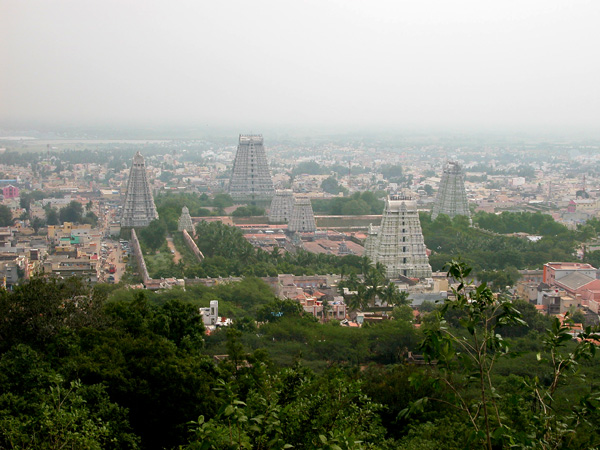
The Arunachaleswara Temple seen from Arunachala Mountain.
Towers from left to right: Ammani Amman Gopuram (north), Raja
Gopuram (east),
Killi Gopuram (center), Pay Gopuram (west) and Tirumanjana Gopuram (south)
The Arunachaleswara Temple covers 10 hectares and is one of the
largest in India. It dates back to the 11th century, but much of the
buildings are built from the 17th to 18th centuries. The temple has
four large Gopurams, with the main gate, Raja Gopuram, facing south.
This huge Shiva Temple is one of the 5 element temples or Panch
Bhoota Sthalams (see below) in South India - The Arunachaleswara Shiva Linga is representing the element,
fire.
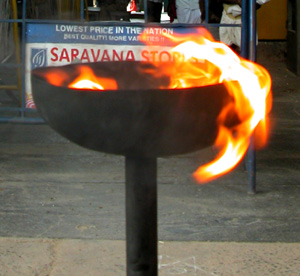
Fire always burning in front of Raja Gopuram
|
|
Thejo - fire
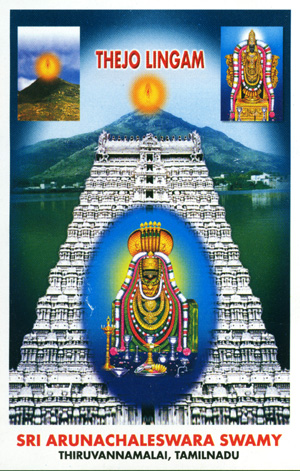
In the Arunachaleswara Temple
Lord Shiva takes the form of Thejo
- fire
- one of the five elements, everything in nature comprises
of
according to Hindu philosophy.
Tiruvannamalai is one of Indias
holiest cities.
See also:
http://en.wikipedia.org/wiki/Annamalaiyar_Temple |
|
|
The templetop
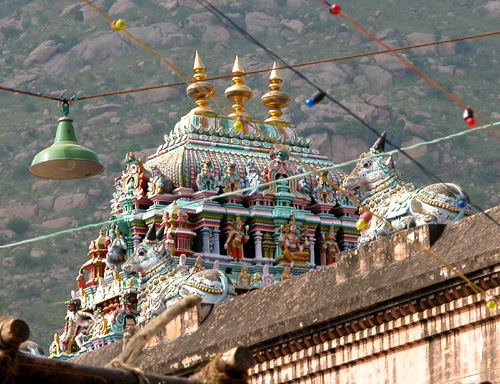
The temple top over the Arunaleswara Lingam,
with Arunchala in the
background
|
|
|
The Five elemental
Shiva Temples
in South-East India |
Abroad
it is less known to the public that 5 magnificent Shiva temples
dedicated to the 5 natural elements:
ether (Akasha), air (Vayu), fire (Thejo), water (Jala) & earth (Pridhvi),
is situated in the eastern part of South India:
The southernmost temple in Tiruvannaikaival, near
Tiruchirapalli is apx. 350 km from Chennai, the capital of Tamil
Nadu. From south going north the other Panch Bhoota Sthalams can be
found in: Chidambaram, Tiruvannamalai, Kanchipuram and barely 100km north-west of Chennai
in Andhra Pradesh the Sri Kalahasti
Temple is situated.
The
five
natural elements - the "Pancha Bhootas"
is a central and most important concept in Indian philosophy and
tradition.
In Hindu faith it is beleived that these five essential elements
created man and the universe.
Lord Shiva, one of the
three main Gods in the Hindu Trinity of Brahma, Vishnu and Shiva, is
represented in these temples as the embodiment of these five
elements.
|
In the Ekambareswara Temple the Shiva Linga is made of earth.
In
Jambukeswara Temple Lord Shiva takes the form of water and the Linga
here is immersed in water.
In the Arunachaleswara Temple Shiva takes
form as fire.
In the Kaahateeswara Temple Shiva is representing wind or air.
Last, but not least in the Nataraja Temple Lord Shiva takes the form
of ether, the most sacred of the five elements. |
The Vedic rituals
performed in the numerous Hindu temples all over India has been
worshipping the Gods using the natural elements in every ritual
performed since time immemorial.
Acess for foreigners
These days it is difficult to enter into the Sanctum Sanctorum to see
the Shiva Lingam and thereby get the darshan of Lord Shiva. The
atmosphere in these magnificent temples is soothing to the heart and
just visiting the temple compound itself is a divine experience.
No photos exists of the Shiva idols inside, only
paintings are allowed. |
|
The 5 Shiva
temples are as follows: |
Sri Ekambeswara Swamy Temple,
Kanchipuram, Tamil Nadu - representing the earth element
Sri Jambukareswara Swamy Temple,
Thiruvanaikaival, Tamil Nadu - representing the water element
Sri Arunachaleswara Swamy Temple,
Thiruvannamalai, Tamil Nadu - representing the fire element
Sri Kalahasteeswara Swamy Temple,
Sri Kalahasti, Tamil Nadu - representing the wind element
Sri Nataraja Swamy Temple,
Chidambaram, Tamil Nadu - representing the ether (Akasha) element |
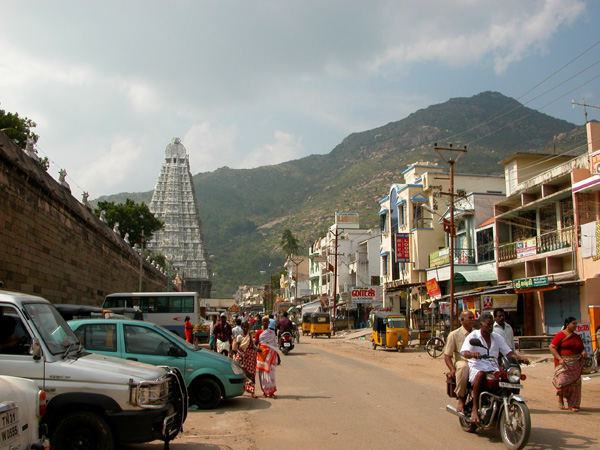
The northern temple wall with Arunachala Mountain in the background
|
Arunachala, the "Kailash
of the South" |
|
Arunachala mountain is the holiest and most revered mountain in
India. It is said that Lord Shiva resides in this montain and that
coming near will remove all your sins. Inoumerous pilgrims have been
here circunambulating the
mountain, especially on Shivaratri, the night of Lord Shiva.
"If those who suffer from physical and
mental ailments, as well as those who are weak and emaciated,
circunambulate Me, their ilments are cured."
Naming Arunachala
"Mount Kailash", the most important and holiest place of Lord Shiva,
signifies the importance of this place in Hindu tradition.
Every saint, devotee,
Guru, Master in India have made pilgrimmages to Arunachala and
several have settled down permanently creating Ashrams for the many
devotees with the ultimate goal of seeking enlightenment.
Ramana Marharshi Ashram is one of
the most well known. Shiva Shakti Ammayar, a living saint gives
darshan every morning and evening. Please visit:
Shiva Shakti Amma
on his
website.
See photos and read more about the significance of Arunachala
on this page.
"Aruna Sadashiva" |
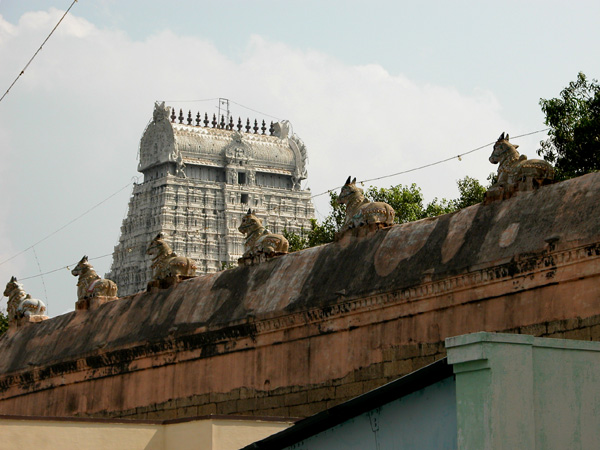
A Shiva temple for sure, with all the Nandi Bulls on the wall - Raj Gopuram
is also seen
|
The Raja Gopuram |
|
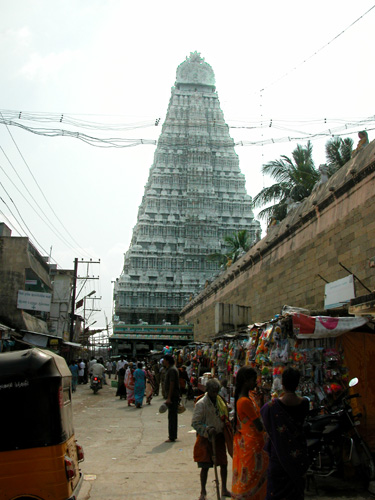
The southern gate, Raja Gopuram - the main gate
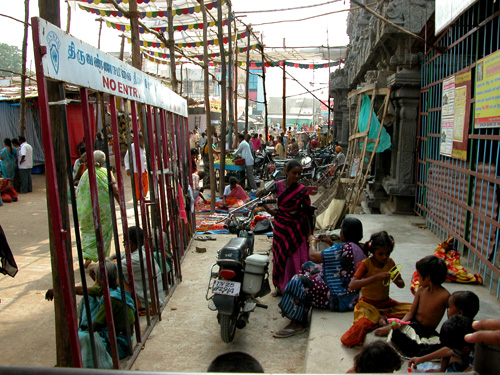
Verdors and beggars outside Raja Gopuram
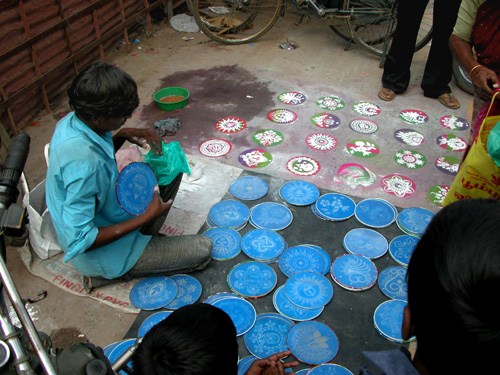
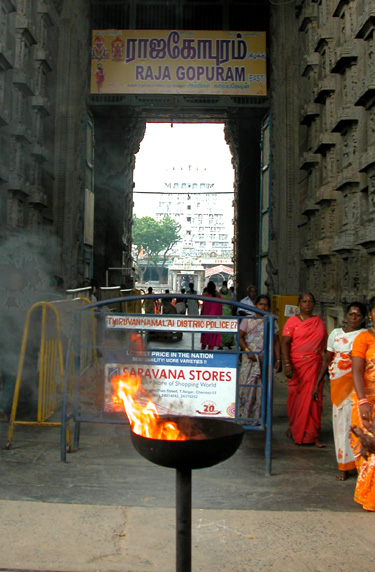
Raja Gopuram, the south tower entrance
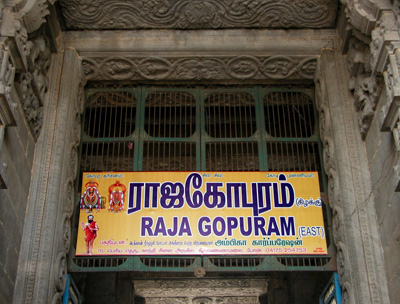
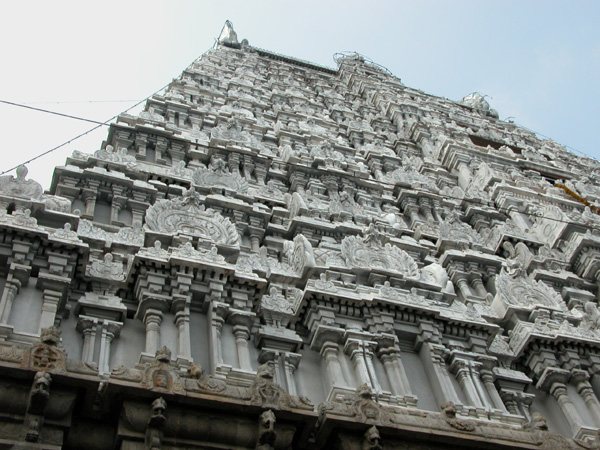
The impressing stucco on the main tower, the Raja Gopuram
|
|
Inside the temple
compound |
|
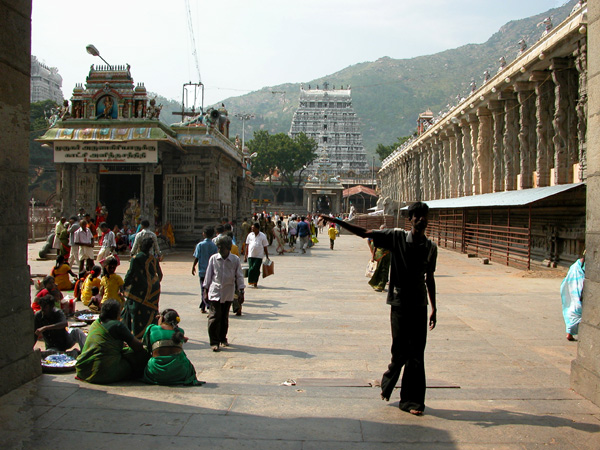
Temple compound seen from the southern gate, Raja Gopuram
The Kambattu Elayanar Murugan Temple is seen to the left
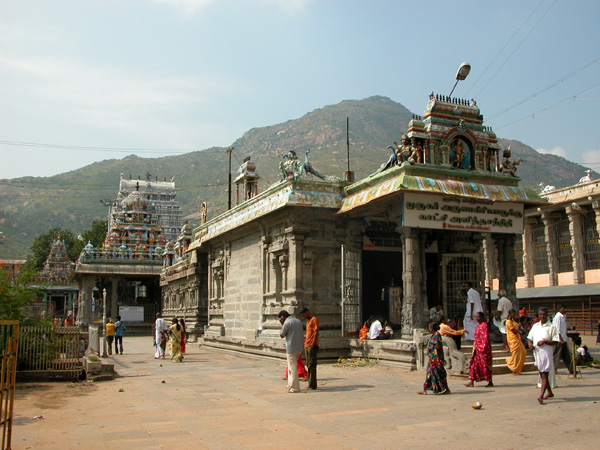
Kambattu Elayanar Murugan Temple
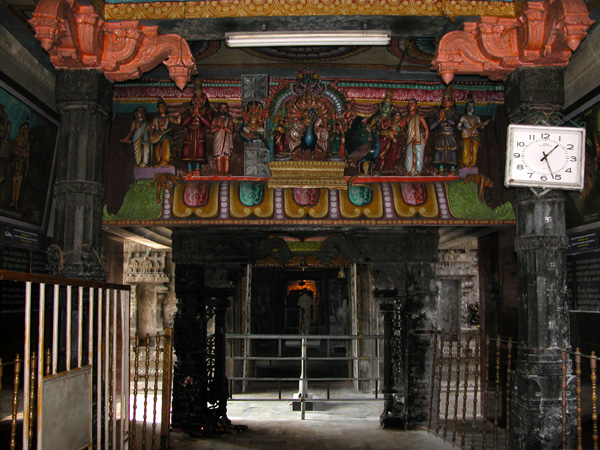
Entrance to the Murugan Temple
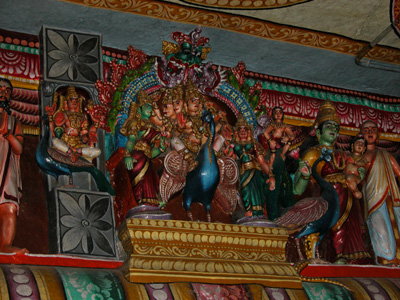
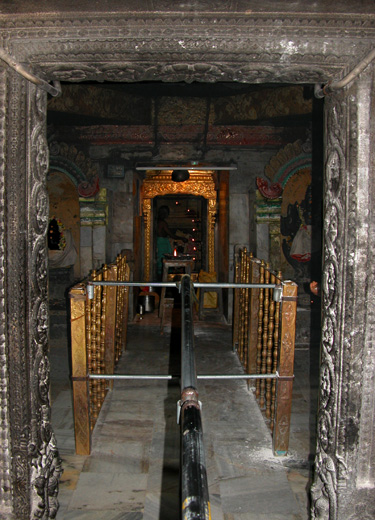
The Sanctum Sanctorum of the Muruga Temple
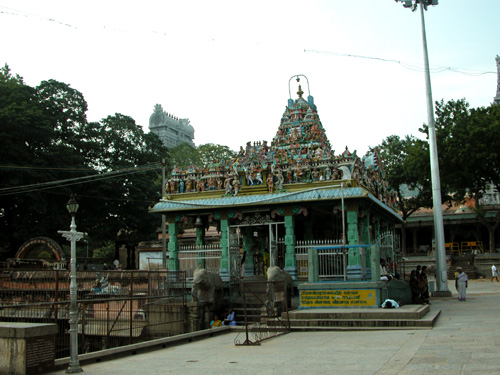
Sarva Siddhi Vinayaka Temple
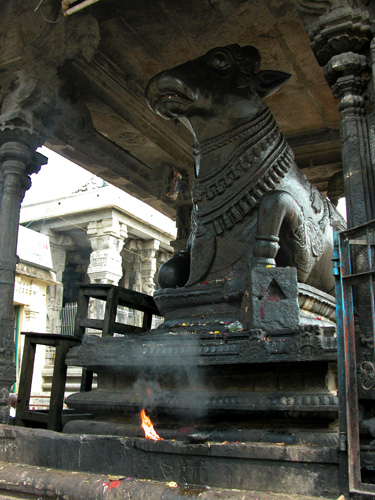
Big Nandi
|
|
The Arunaleswara
Shiva Temple |
|
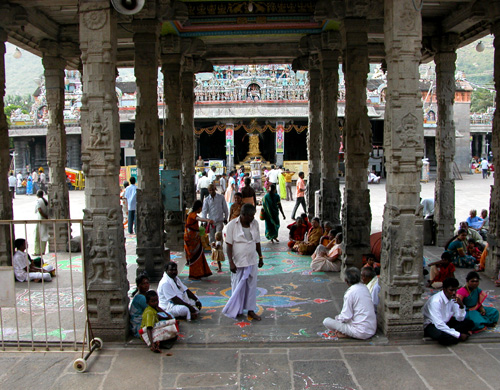
The main Arunachaleswara Shiva Temple seen from the Mantapam
in front of Killi Gopuram, situated in the center of the temple
compound
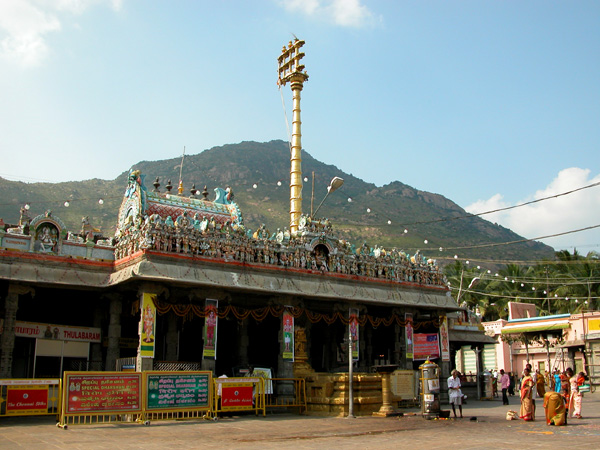
Entrance to the Arunachaleswara Temple
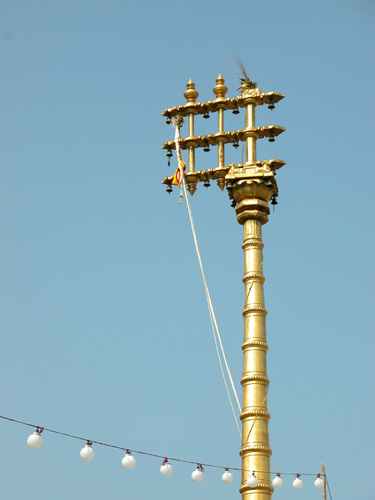
The flagpole at the entrance

The temple top over the Arunaleswara Lingam,
with Arunchala in the
background
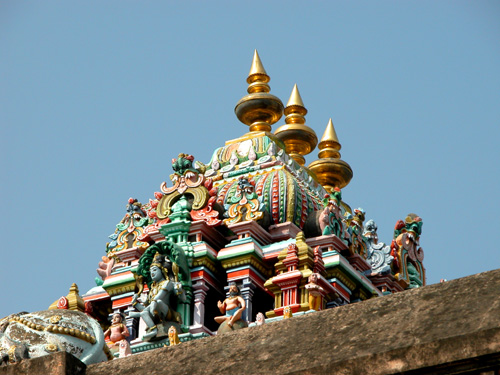
The
Arunaleswara Temple top
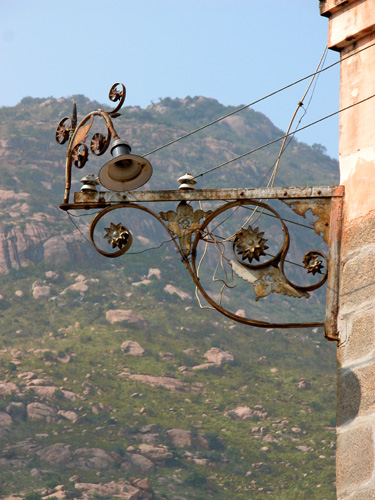
A serene and wonderful wiev from the main temple
|
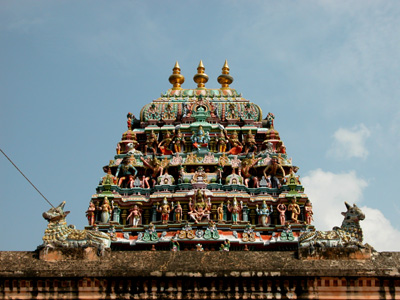
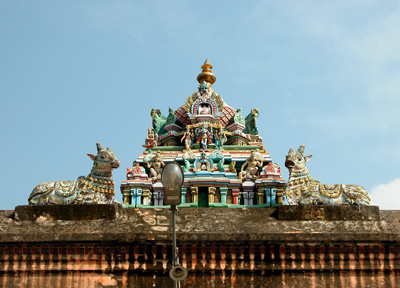
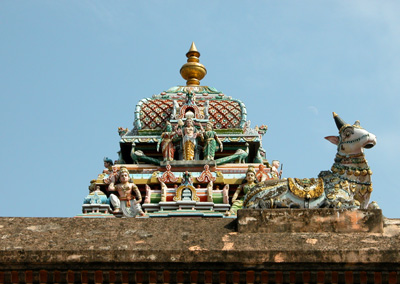
Three shrines in the main temple
|
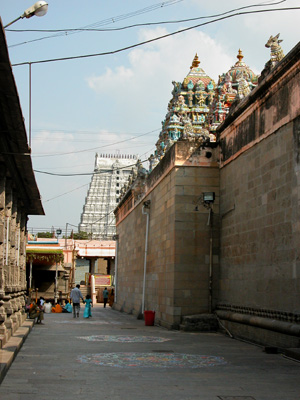
Backside of the main temple
|
|
Other shrines in
the temple area |
|
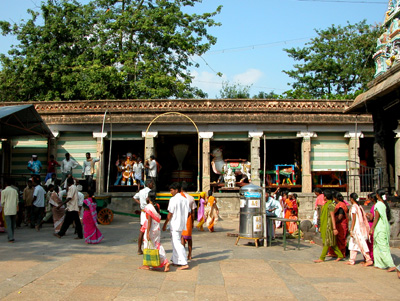
Keeping the procession idols in a safe place
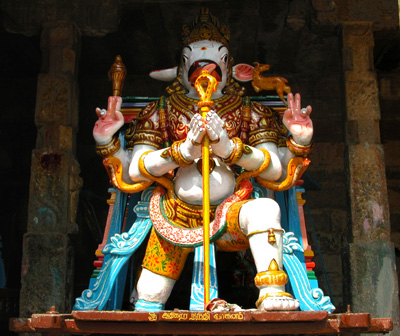
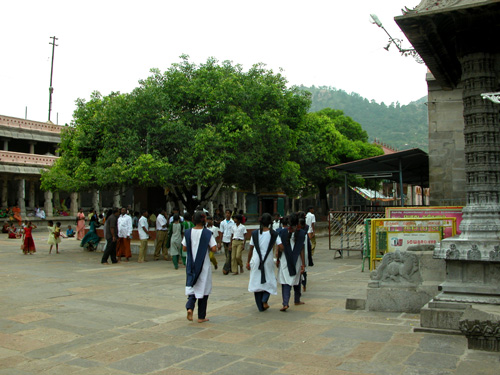
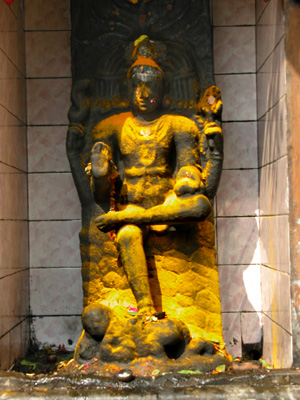
|
|
A walk in
the temple premises
with the temple elephant |
|
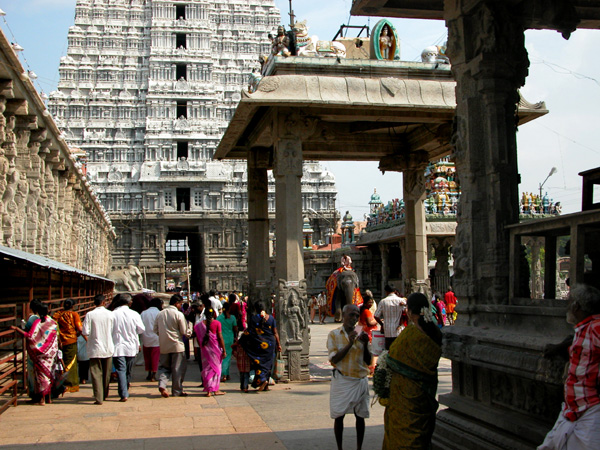
The tempel elephant is coming from a procession in the street, Raja
Gopuram is in the background.
To the right the Kambattu Elayanar Murugan Temple
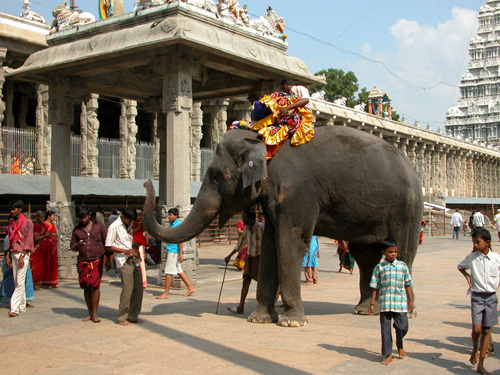
The coin blessing from the temple elephant
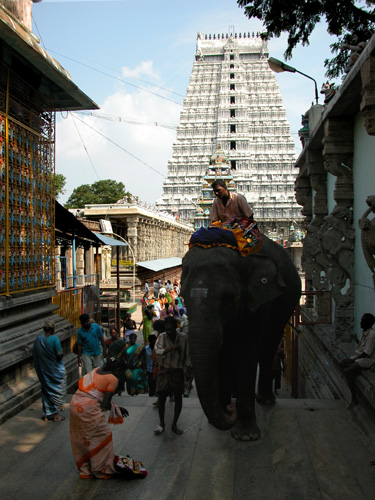
The elephant even walks on stairs
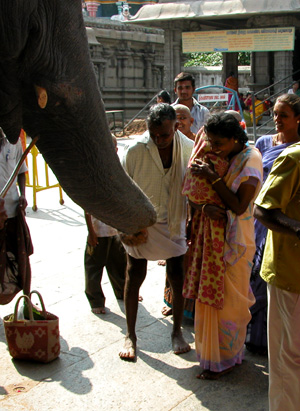
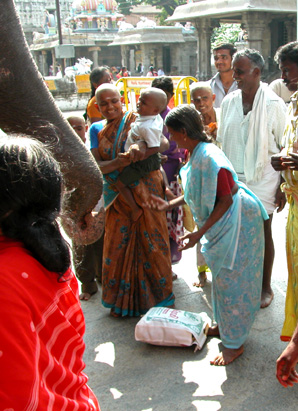
The huge blessing is scaring the small children a little bit
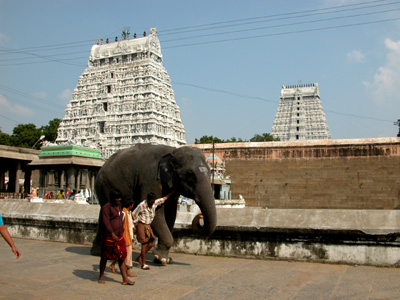
Walking along the Brahma Teertham
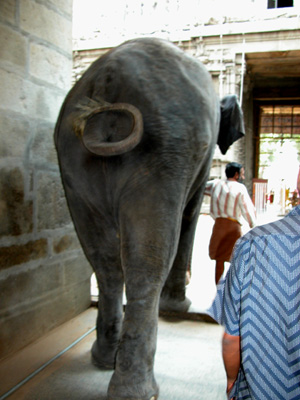
Inside the Mantapam
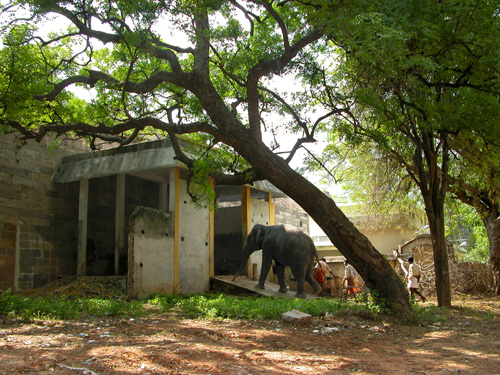
And back to the elephant stable at the west wall to rest
|
|
The Brahma
Teertham |
|
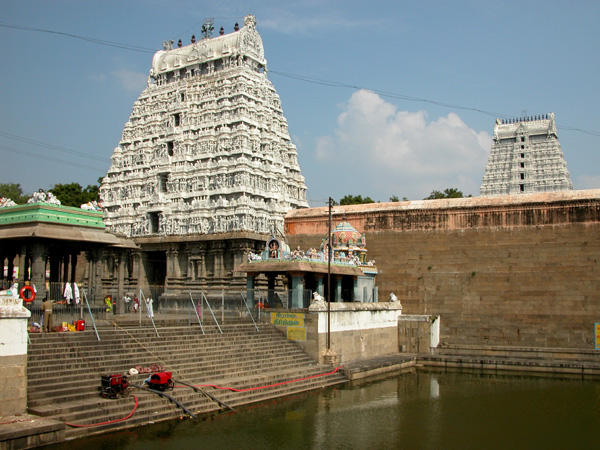
The Brahma Teertham
There are two Teerthams or temple tanks for rituals and ritual
bathing in Arunaleswara Temple.
The other Teertham is called Shiva Ganga Teertham.
|
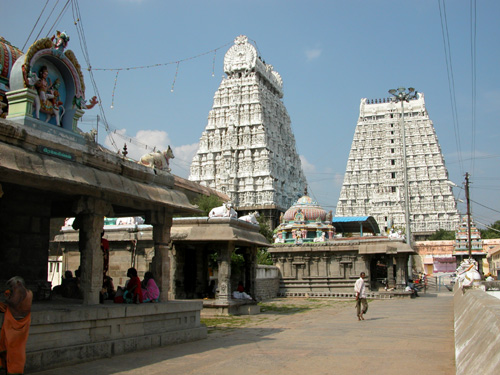
Killi Gopuram in the center of the temple compound
and the north tower is seen in the background
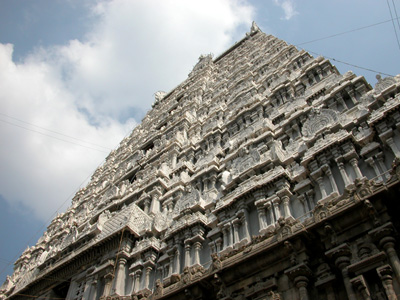
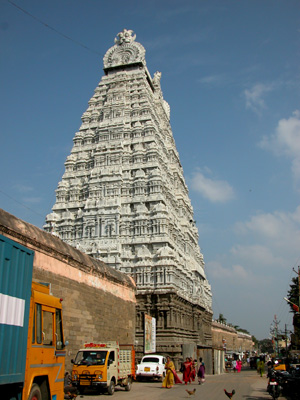
The south tower, Tirumanjana Gopuram
|
Temple wall of
great beauty |
|
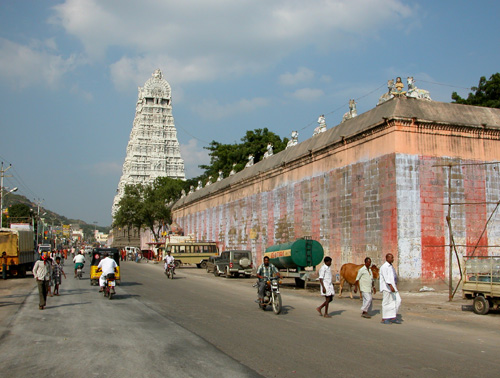
The west wall with Pey Gopuram
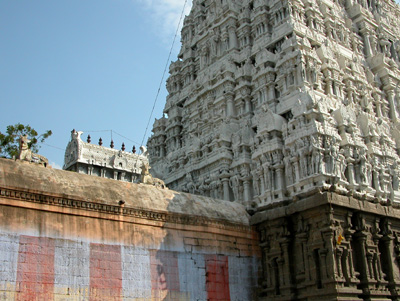
Pey Gopuram
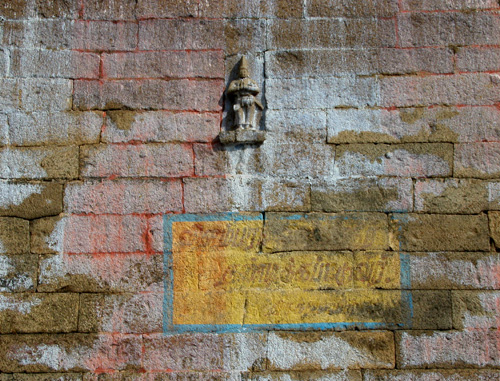
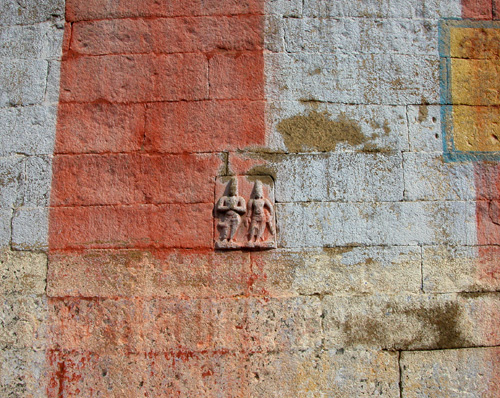
|
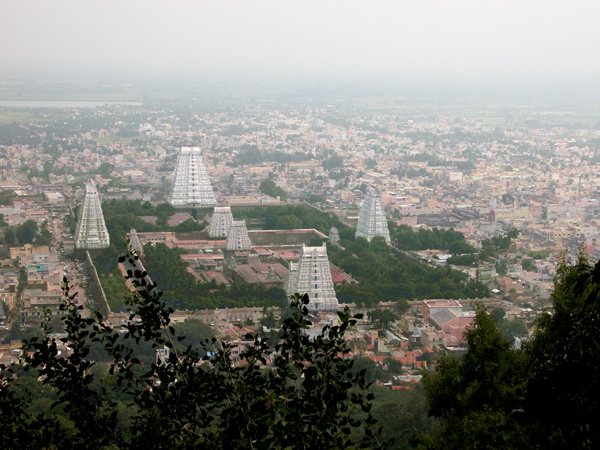
The Arunaleswara Temple seen from further up the Arunachala Mountain,
at the enlightenment cave of Ramana Maharshi's
mother.
See also:
Mevlana Rumi, The Sufi Master and
Dancing Dervishes on this site.
mukti4u2.dk
►
created by
BP |